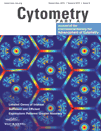|
Quality control:
|
The 4-color ICS assay is performed in accordance with a highly standardized SOP (Jaimes, 2011) using standardized lyophilized stimulation and staining plates obtained from BDB that have undergone QC testing for performance. A gating template is provided in the protocol. Backgating is routinely performed to both maximize signal and minimize noise.
Samples used in the Proficiency Program are pre-screened for responses to test antigens by both serology, ELISpot and Flow Cytometry. Donor PBMC are screened by Flow Cytometry once and each plate includes a Batch Control (single vial obtained from a leukapak from one donor). Batch Control values are tabulated in a trend line and must be within acceptable limits for a batch to be acceptable for reporting. All subsequent PBMC testing is compared to the original donor screening values for reproducibility.
Each sample is stimulated in triplicate and Repetitive Values (Nicholson, 1996) are assessed for common measures; samples with measures falling outside the acceptable range are considered “Not valid.” Repetitive Values include % lymphocytes, % CD3+, % CD4+, % CD8+, % CD4+Cyto+, and % CD8+Cyto+. A negative control (Unstim) stimulation is included to aid in placement of gates between fluorescence negative and positive boundaries.
To perform the EQAPOL 4-color ICS assay, all Flow Core Operators receive rigorous training for all aspects of the assay, including thaw, stimulation, stain (fix, perm, stain), acquisition, and analysis. The final results must be within established acceptable ranges before an Operator is permitted to perform the EQAPOL 4-color ICS assay.
The details for each assay performed is documented on an Assay Worksheet and protocol deviations are recorded and reviewed by a Laboratory Manager.
The instrument is maintained under a service contract with the manufacturer and is calibrated and cleaned daily according to manufacturer recommendations. Instrument calibration is performed immediately prior to sample collection according to the target channel specifications provided in the protocol (Jaimes, 2011).
All other laboratory equipment are calibrated and maintained as suggested for performing GCLP compliant studies, including NIST-certified thermometers and timers. Environmental conditions are monitored and documented daily.
|

